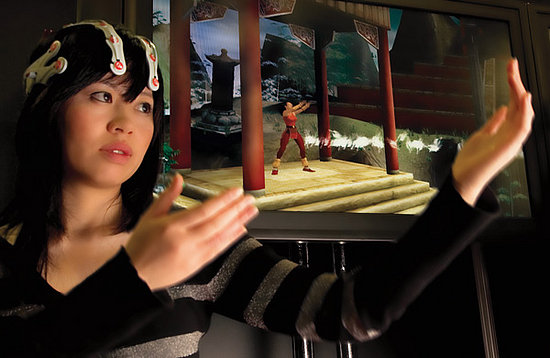Direct manipulation “describes interactive systems where the
user physically interacts with their operating system” (Golbeck, 2002). Direct manipulation
deals with continuous object representation, actions and feedback such as rapid,
reversible and incremental and actions based on real-world interactions. A person
wants to have a positive experience with the system and once the person
understands it they want to show it off to novices and teach them about it.
 |
| Direct Manipulation seen in Minority Report |
If we look at the history of direct manipulation we can see
that word processors were at the beginning. They were command line-based, a
person would have to teach people how to start a document and use it. Commands such
as how to open a document and close a document were things you would have to
teach a person. Even today a person needs to put markup commands to explain how
to use these types of programs, such as HTML 5. Now word processors are
display-based.
 |
| Figure 2 - Direct Manipulation Comic Strip |
Spatial data-managements systems allows for a better model
of reality. Successful systems are dependent on choosing appropriate icons (use
icons that players are familiar with, don’t use a red cross for the damage icon
– use it for health because everyone already connects red crosses with health),
graphical representations (don’t use a chest as a death item, use it to
represent treasure) and natural and comprehensible data layouts (make
everything on the screen make sense).
There are three principles of direct manipulation.
1.
Continuous representations of the objects and
actions of interest with meaningful visual metaphors
2.
Physical actions or presses of labeled buttons,
instead of complex syntax
3.
Rapid, incremental, reversible actions whose effects
on the objects of interest are visible immediately
There are problems with direction manipulation. Spatial or
visual representations can be too spread out (a user cannot focus on everything
because they are all over the screen), high-level flowcharts and
database-schema can become confusing (too much detailed information is present
and can make the user become disarrayed), design may force valuable information
off the screen, users must learn the graphical representations, visual
representation may be misleading and typing commands with the keyboard may be
faster.
Direct manipulation is also evident in video games. When a person
is ready to play a game he/she must pick up a controller and learn how to use
the interface in a short period of time. “With only a small amount of training,
users pick up controllers with buttons and knobs that generally map very well
to the way the character is moving in physical space” (Golbeck, 2002). Video game
systems such as Nintendo Wii, Sony PlayStation and Microsoft Xbox use direct
manipulation. The field of action that is evident in games are captivating and visual;
this allows the player to understand the distance around them in the gaming environment
and compels them to learn how to interact with the system. The commands that
players use are physical actions whose results are immediately shown on the
screen. Most games continuously display a score showing how the user is doing
in the game. It forces the player to understand how to do better in the game,
if your score is low you need to learn the controls better and if your score is
high you understand the system and your performance is good. Spore is a good example
because it shows everything on the screen. There is enough space to understand
everything, players need to adapt quickly to the changing environment and the
updates are displayed for the user to understand the game. Users can also
create their creature with a click of a button, players can stretch and form
their creature into whatever they desire by dragging their mouse and move it
using physical actions. The menu systems are also very easy to use and a player
can learn it very effectively and efficiently.
 |
| Figure 3 - Spore Creature Creation |
Questions to Consider
When the new generation of gaming consoles come out how will
it affect direct manipulation?
If I was to design a completed game using only augmented
reality would a player learn how to use it faster than if it was a regular game
on the PlayStation 3 using a basic controller?
If there were visual representation in a game that were misleading
would players stop playing the game or would they take the extra time to learn
these representations. And if they do learn them how will it affect their recognition
memory? (will it replace or take over the images they use to associate them with?)
References
Golbeck, Jennifer . " Direct
Manipulation." Department of Computer Science. N.p., 26 Oct. 2002.
Web. 21 Mar. 2013.
<http://www.cs.umd.edu/class/fall2002/cmsc838s/tichi/dirman.html>.
"What is WYSIWYG? - A Word
Definition From the Webopedia Computer Dictionary." Webopedia: Online
Computer Dictionary for Computer and Internet Terms and Definitions. N.p.,
n.d. Web. 21 Mar. 2013. <http://www.webopedia.com/TERM/W/WYSIWYG.html>.
Images
Figure 1 - http://www.blastam.com/blog/wp-content/uploads/minority-report.jpg
Figure 2 - http://blog.lib.umn.edu/torre107/si/pics/superficialintelligence12.jpg
Figure 3 - http://gamingprecision.com/wp-content/uploads/2011/07/spore-creature-creator.jpg






